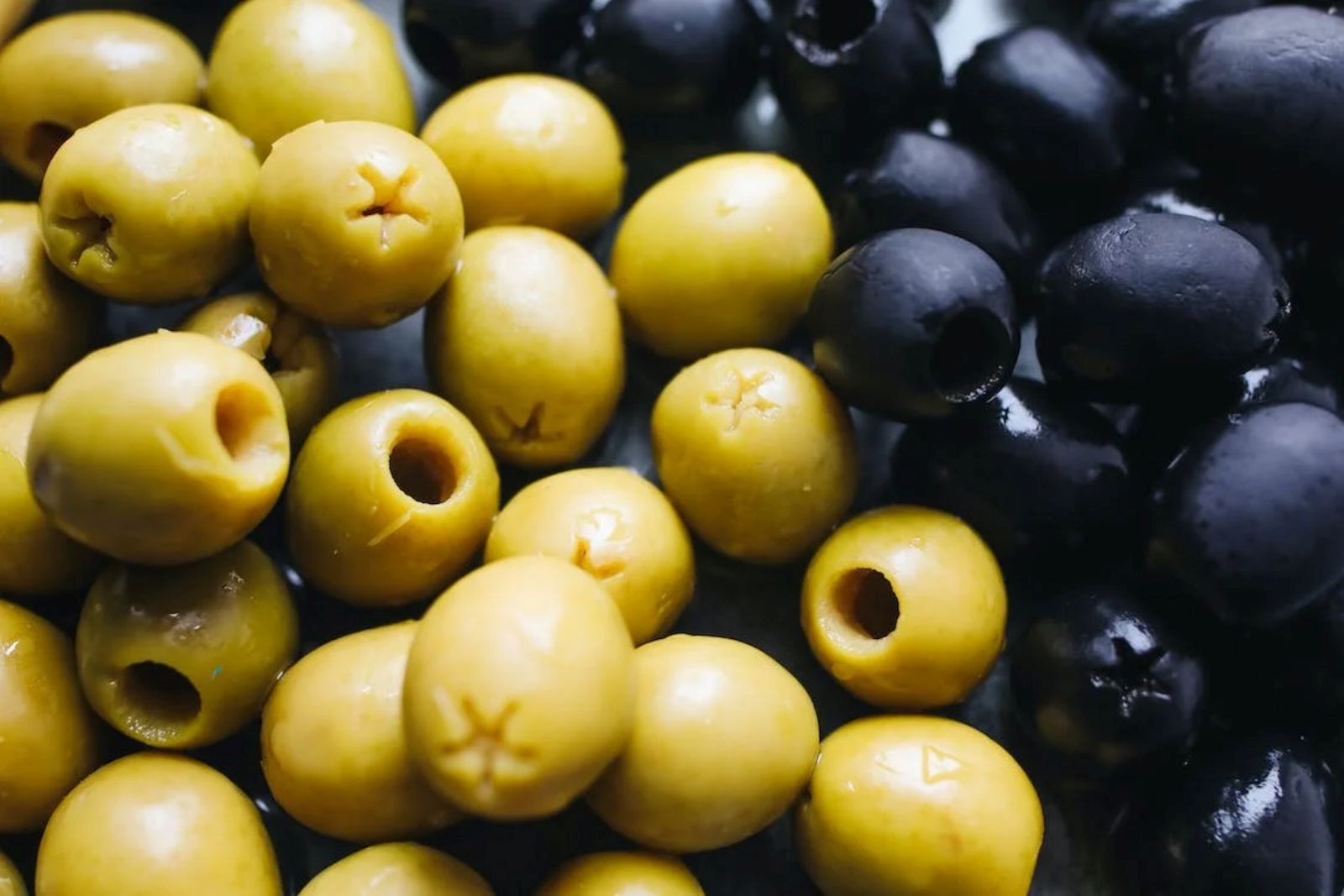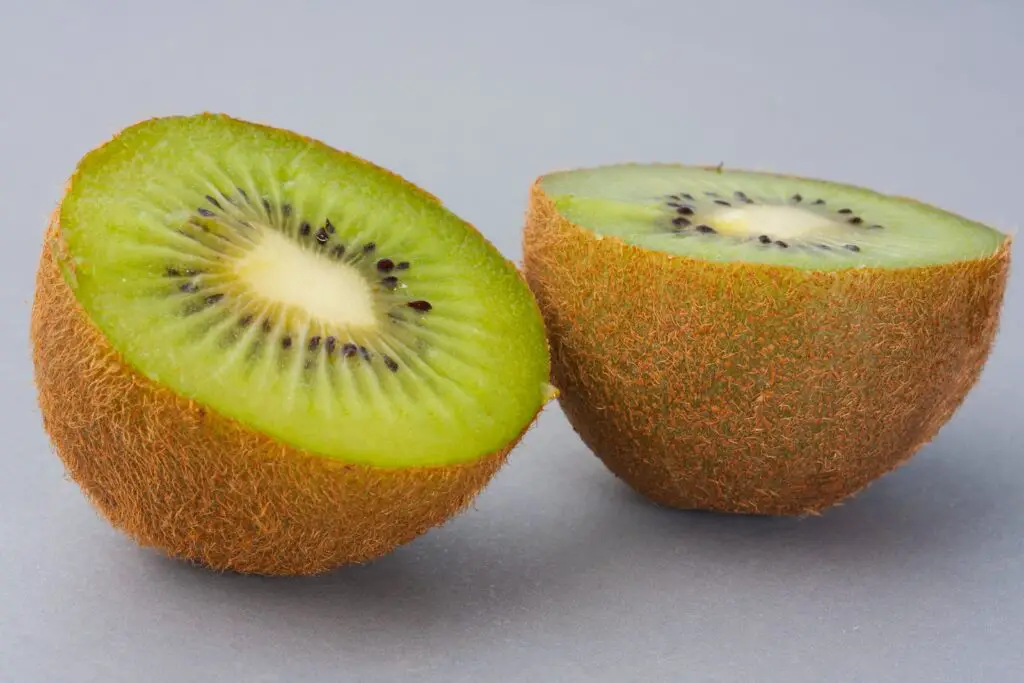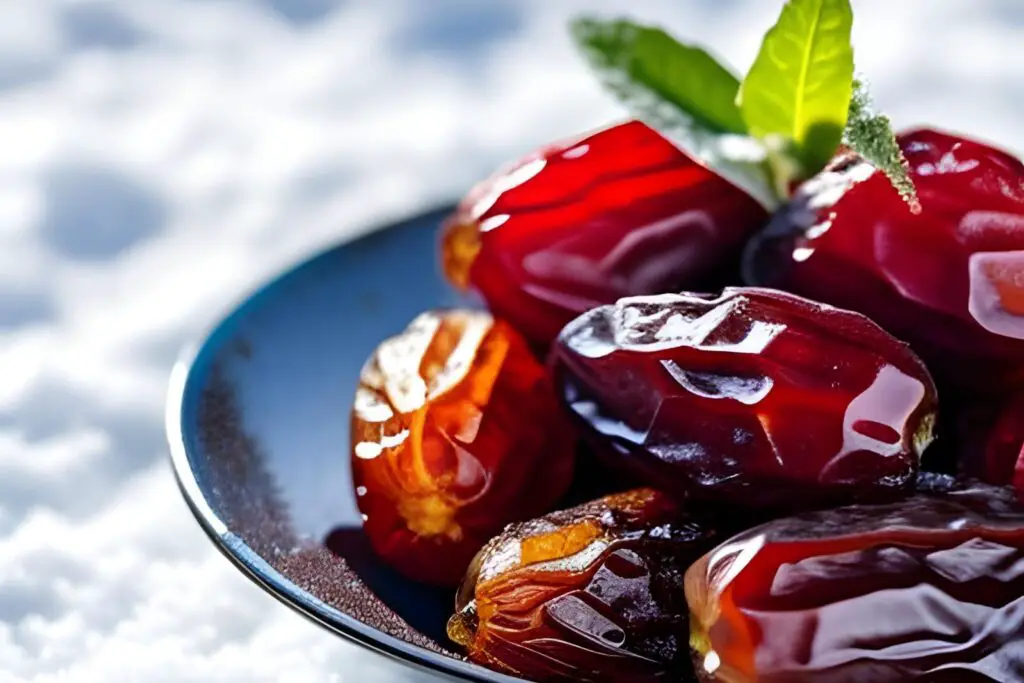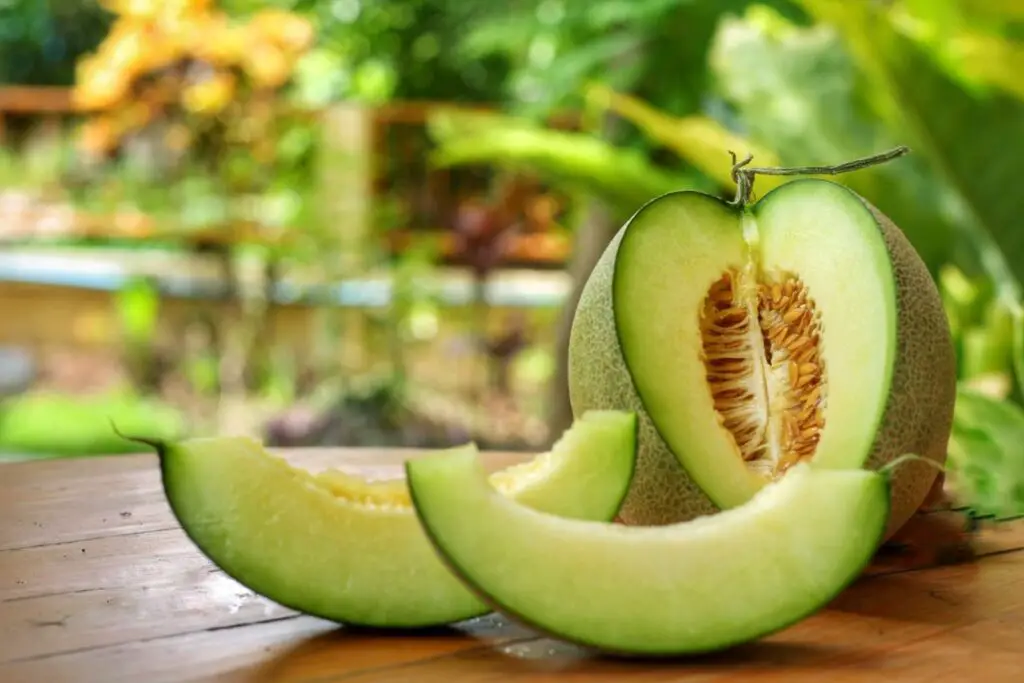
Olives are flavorful fruits that are enjoyed by many people around the world. Whether used as a topping for pizzas and salads or as a standalone snack, olives add a unique taste to various dishes. If you have a surplus of olives or want to preserve their freshness for later use, freezing them is an excellent option. Freezing olives is a simple process that can help extend their shelf life while maintaining their flavor and texture. In this article, we will provide you with a step-by-step guide on how to freeze olives to ensure they stay delicious for future enjoyment.
Here’s a comprehensive guide on how to freeze olives:
- Step 1: Select fresh, high-quality olives
- Step 2: Wash the olives
- Step 3: Remove any stems or leaves
- Step 4: Sort and pit the olives (optional)
- Step 5: Dry the olives
- Step 6: Prepare for freezing
- Step 7: Flash-freeze the olives
- Step 8: Package the olives
- Step 9: Label and date the packages
- Step 10: Store in the freezer
Step 1: Select fresh, high-quality olives
Selecting fresh, high-quality olives is crucial when it comes to freezing them. Ripe, plump olives that are free from any signs of spoilage will yield the best results. Here’s why:
- Texture: Olives with a firm texture are more likely to maintain their texture after freezing. When you bite into a frozen olive, you want it to have a pleasing texture that is not overly mushy or mealy. Fresh olives are more likely to retain their firmness, resulting in a more enjoyable eating experience.
- Flavor: High-quality olives have a distinct and rich flavor profile. By choosing olives that are ripe and in their prime, you ensure that their unique taste is preserved even after freezing. Olives that have begun to spoil or deteriorate may develop off-flavors that can affect the overall taste.
- Color: Vibrant-colored olives are a visual indicator of their freshness. Look for olives that have a vibrant hue, whether they are green, black, or any other variety. The color of the olives can be an indication of their ripeness and can also contribute to the overall visual appeal of your frozen olives.
Step 2: Wash the olives
Washing the olives before freezing is an important step to ensure that they are clean and free from any dirt or residue. Here’s why it’s essential:
- Sanitation: Olives, like any fresh produce, can accumulate dirt, dust, or other contaminants during harvesting, transportation, or storage. Washing them helps remove these external impurities, ensuring that you have clean olives to freeze.
- Microorganisms: While olives have natural preservatives such as salt and brine that inhibit bacterial growth, it’s still beneficial to wash them. Washing can help remove any potential surface bacteria or microorganisms that might be present on the olives, reducing the risk of contamination.
- Residue Removal: Some olives may have residues such as pesticide traces or natural substances like sap or oils. Washing the olives under cold running water and gently rubbing them helps eliminate such residues, allowing you to freeze olives that are as pure and natural as possible.
By washing the olives, you ensure that you are starting with a clean and hygienic base for freezing. It promotes food safety and helps maintain the quality of the olives throughout the freezing process. Remember to handle the olives gently while washing to avoid damaging their skin or altering their texture. Once the olives are washed and rinsed thoroughly, they are ready for further preparation or packaging before freezing.
Step 3: Remove any stems or leaves
Removing any stems or leaves from the olives before freezing is a crucial step in ensuring optimal texture and taste. Here’s why it’s important:
- Texture: Stems and leaves can have a different texture compared to the flesh of the olives. If left attached, they can contribute to an undesirable texture in the frozen olives. Stems, in particular, can become tough and fibrous, while leaves may wilt or become slimy during freezing. By removing them, you can maintain a consistent and pleasing texture throughout the olives.
- Taste: Stems and leaves can also affect the taste of the olives. They may have a bitter or herbaceous flavor that can seep into the olives during freezing. By removing them, you ensure that the flavor of the olives remains pure and unaffected by any unwanted tastes from the stems or leaves.
- Aesthetic appeal: Removing stems and leaves enhances the visual appeal of the olives. When serving or using frozen olives in recipes, it’s more visually appealing to have just the plump olives without any extraneous parts. Removing stems and leaves helps create a more professional and polished appearance.
Step 4: Sort and pit the olives (optional)
Whether or not to pit the olives before freezing is a personal preference. Here’s why this step is optional and the considerations for each choice:
Pitting the olives:
- Convenience: Pitting the olives before freezing can make them more convenient to use later. Pit-free olives are ready to be added to various dishes or recipes without the need for additional preparation.
- Texture: Pitted olives may have a slightly different texture compared to olives with pits. The removal of the pit can result in a smoother and softer texture, which some individuals may prefer.
- Consumption: Pitted olives are easier to eat, especially in situations where you don’t want to encounter the pit, such as when using olives as a pizza topping or in salads.
Freezing olives with pits intact:
- Flavor: Some people believe that leaving the pits in the olives during freezing can contribute to a richer and more intense flavor. The pit is said to add a subtle bitterness that enhances the overall taste.
- Texture: Olives with pits tend to have a firmer and more substantial texture. If you prefer a firmer bite or enjoy the tactile experience of biting into an olive and removing the pit, freezing olives with pits may be preferable.
When deciding whether to pit the olives before freezing, consider your personal preferences, the intended use of the olives, and the convenience factor. If you choose to pit the olives, you can use a small knife or an olive pitter to remove the pits. Take care to make a clean incision and remove the pit without damaging the flesh of the olive.
Remember, whether pitted or with pits, both options can be successfully frozen. Choose the method that aligns with your taste preferences and the practicality of using the olives in your desired recipes.
Step 5: Dry the olives
Drying the olives thoroughly before freezing is an important step to prevent freezer burn and maintain the quality of the olives. Here’s why it’s crucial to ensure the olives are as dry as possible:
- Freezer burn prevention: Excess moisture on the surface of the olives can contribute to freezer burn. Freezer burn occurs when water molecules on the surface of food items evaporate and then recondense, forming ice crystals. These ice crystals can dehydrate the olives, leading to texture changes and flavor deterioration. By drying the olives before freezing, you reduce the moisture content and minimize the risk of freezer burn.
- Texture preservation: Excessive moisture can also affect the texture of the olives during freezing. If the olives are frozen with moisture on their surface, it can cause them to become soft, mushy, or develop an undesirable texture. Drying the olives helps to maintain their natural firmness and texture, ensuring a more enjoyable eating experience when they are thawed.
- Prevention of microbial growth: Moisture provides an environment where bacteria or other microorganisms can thrive. By drying the olives thoroughly, you reduce the moisture content and minimize the potential for microbial growth during freezing. This helps to maintain the olives’ freshness and quality over an extended period.
To dry the olives, gently pat them with a clean kitchen towel or paper towel. Absorb as much moisture as possible, paying attention to all surfaces of the olives. Take care not to handle them too roughly or squeeze them, as this can cause damage or alter their shape.
Step 6: Prepare for freezing
Preparing the olives for freezing involves arranging them in a way that promotes individual freezing and prevents them from sticking together. Here’s why this step is important:
- Individual freezing: Spreading the olives in a single layer on a baking sheet or tray allows for individual freezing. When olives freeze individually, they maintain their distinct shapes and are less likely to clump together. This ensures that you can easily remove the desired amount of olives without having to thaw an entire frozen clump.
- Preventing clumping: If olives freeze in clumps, they can be difficult to separate when you only need a few at a time. Clumps can also make it challenging to measure out specific quantities for recipes. By ensuring that the olives do not touch each other during freezing, you prevent them from freezing together in solid blocks or clumps.
- Easy portioning: Arranging the olives in a single layer facilitates portioning when you need to use them later. Individual frozen olives can be easily scooped or measured out, allowing for precise portioning based on your needs. This is particularly useful when you want to use olives in recipes that require specific quantities.
To prepare the olives for freezing, spread them out in a single layer on a baking sheet or tray lined with parchment paper. Make sure there is enough space between each olive, ensuring they do not touch or overlap. This arrangement promotes even freezing and prevents them from sticking together.
Step 7: Flash-freeze the olives
Flash-freezing the olives is a crucial step to preserve their shape, texture, and prevent them from sticking together. Here’s why flash-freezing is important:
- Shape and texture preservation: Flash-freezing refers to rapidly freezing the olives at a very low temperature. This quick freezing process helps to preserve the shape and texture of the olives. By freezing the olives individually, they maintain their distinct form and minimize the risk of becoming mushy or losing their structural integrity.
- Prevention of sticking: Flash-freezing the olives individually ensures that they freeze separately without sticking together. When olives freeze in clumps or stick to each other, it becomes difficult to separate them when you only need a few for a recipe. Flash-freezing allows the olives to freeze individually, preventing them from adhering to one another.
- Convenience and portioning: Flash-freezing the olives allows for easy portioning and handling. Once the olives are solidly frozen, they can be transferred to a freezer-safe container or bag. With individually frozen olives, you have the flexibility to remove as many or as few olives as needed without thawing the entire batch.
To flash-freeze the olives, place the baking sheet or tray with the arranged olives in the freezer. Leave them undisturbed for about 2 to 3 hours, or until they are solidly frozen. The exact freezing time may vary depending on the size and moisture content of the olives, as well as the temperature of your freezer.
Step 8: Package the olives
After the olives have been flash-frozen, it’s time to package them properly to maintain their quality and protect them from freezer burn. Here’s why proper packaging is essential:
- Freezer burn prevention: Freezer burn occurs when food is exposed to air inside the freezer. This leads to moisture loss and the development of dry, discolored patches on the surface of the olives. Packaging the olives in airtight containers or bags helps minimize their exposure to air and reduces the risk of freezer burn.
- Quality preservation: By removing as much air as possible from the packaging, you maintain the olives’ freshness and flavor over an extended period. Exposure to air can result in the loss of taste, texture, and overall quality of the olives. Proper packaging helps to preserve their original attributes, allowing you to enjoy flavorful olives when you thaw them later.
- Convenience and organization: Packaging the olives in freezer-safe containers or bags makes it easier to store and retrieve them from the freezer. Properly labeled and sealed packages allow for better organization and prevent cross-contamination with other freezer items. This ensures that the olives remain easily accessible and in optimal condition for future use.
To package the frozen olives, transfer them from the baking sheet or tray into airtight freezer-safe containers or freezer bags. Make sure to remove as much air as possible from the packaging before sealing. This can be achieved by pressing out excess air or using vacuum-sealed bags if available. Properly labeled packages with the date of freezing allow for easy identification and rotation of olives.
Step 9: Label and date the packages
Labeling and dating the packages of frozen olives is a crucial step in maintaining organization, tracking freshness, and easily identifying the olives in your freezer. Here’s why this step is important:
- Easy identification: By labeling each container or bag, you can quickly identify the type of olives stored inside. If you have different varieties or preparations of olives, such as Kalamata, green, or marinated, labeling ensures you can easily differentiate them without needing to open the packages. This saves time and prevents potential mix-ups when selecting olives for a specific recipe or use.
- Freshness tracking: Including the date of freezing on the labels allows you to track the freshness of the olives. Frozen olives can typically maintain their quality for several months, but it’s still important to keep track of how long they have been stored. By labeling with the freezing date, you can monitor the olives’ shelf life and prioritize using older batches first to ensure optimal taste and texture.
- Organizational efficiency: Clear labeling contributes to overall organizational efficiency in your freezer. By having labeled packages, you can easily locate and retrieve the desired olives without rummaging through the entire freezer or opening multiple containers. It also helps prevent the accidental thawing of olives when searching for a specific type.
To label the packages, use a marker or adhesive labels. Write the type of olives, such as “Kalamata” or “Green Olives,” on each package. Additionally, include the date of freezing, using a format like “MM/DD/YYYY,” to clearly indicate when the olives were frozen.
Step 10: Store in the freezer
Once the olives have been properly packaged and labeled, it’s time to store them in the freezer. Ensuring proper storage conditions will help maintain the quality of the olives over an extended period. Here’s why proper freezer storage is important:
- Temperature consistency: The freezer should be set to a consistent, cold temperature for optimal storage of the olives. Fluctuations in temperature can affect the texture and flavor of the olives, potentially leading to degradation in quality. Maintaining a consistent temperature helps preserve the olives’ taste and texture over time.
- Freezer storage duration: Olives can typically be stored in the freezer for up to 6 months without a significant loss in quality. However, it’s important to note that the longer olives are stored, the more their texture and flavor may deteriorate. While they may still be safe to consume beyond 6 months, their quality may be compromised. It’s best to consume the olives within the recommended storage duration for optimal taste and texture.
- Proper packaging protection: Storing the olives in the freezer provides protection against spoilage and extends their shelf life. The airtight packaging prevents the olives from being exposed to air and moisture, minimizing the risk of freezer burn and maintaining their overall freshness.
To store the olives in the freezer, place the labeled packages in a consistent, cold area of the freezer where the temperature remains stable. Ensure that the olives are not placed near the freezer door or in areas prone to temperature fluctuations. This helps maintain the quality of the olives throughout their storage period.
Other related questions
How do I defrost olives?
To defrost olives, follow these steps:
- Refrigerator thawing: The recommended method is to transfer the frozen olives to a container or zip-top bag and place them in the refrigerator. Allow the olives to thaw slowly and evenly in the refrigerator for several hours or overnight. This method helps preserve their texture and flavor.
- Room temperature thawing: If you need to defrost olives quickly, you can place the sealed container or bag of frozen olives at room temperature. It may take a couple of hours for the olives to thaw completely using this method. However, keep in mind that this method can lead to some loss of texture and flavor compared to refrigerator thawing.
- Recipe incorporation: If you plan to use the olives in a cooked dish, you can add them directly to the recipe while still frozen. The heat from the cooking process will thaw the olives quickly. However, be cautious with the timing, as overcooking can result in a softer texture.
Avoid using methods such as microwave defrosting, as it can cause uneven thawing and affect the quality of the olives.
Can I refreeze olives?
No, it is generally not recommended to refreeze olives once they have been thawed. The freezing and thawing process can affect the texture, taste, and overall quality of the olives. Additionally, repeated cycles of freezing and thawing increase the risk of bacterial growth and spoilage. It is best to consume the olives after the initial thawing to ensure their optimal quality and safety.
How do I know if the olives have gone bad after being frozen?
After being frozen, if olives have gone bad, there are several signs to look out for. These include changes in color, texture, and odor. If the olives appear discolored, mushy, or have a foul or off-putting smell, it is an indication that they may have spoiled and should not be consumed. It is important to trust your senses and discard any frozen olives that exhibit these signs of spoilage.
Can I freeze olives that are already marinated?
Yes, you can freeze olives that are already marinated. However, it’s important to note that freezing may slightly alter the texture and flavor of the marinade. Consider transferring the marinated olives to a freezer-safe container or bag, ensuring they are well-sealed to prevent any leaks or spills.
Are there any specific types of olives that freeze better than others?
Most types of olives can be successfully frozen. However, some varieties, such as black olives and Kalamata olives, tend to freeze better due to their firmer texture. It’s recommended to choose olives that are ripe, plump, and have a firm texture for better freezing results.
Can I freeze olives in brine or oil?
Freezing olives in brine or oil is not recommended. Both brine and oil can become thicker and cloudy when frozen, affecting the texture and taste of the olives. It is best to freeze olives without any additional liquids.
Can I freeze olives that have been stuffed?
Yes, you can freeze olives that have been stuffed. However, keep in mind that the texture of the stuffing may change slightly after freezing. It’s recommended to freeze stuffed olives in airtight containers or bags to prevent any cross-contamination.
Are there any special considerations for freezing olives with herbs or spices?
Freezing olives with herbs or spices is possible, but be aware that the flavors of the herbs and spices may intensify during freezing. Consider using smaller amounts of herbs or spices if you plan to freeze olives with added seasonings.
Do frozen olives maintain their nutritional value?
Freezing olives helps preserve their nutritional value. While there may be slight changes in texture and flavor, the essential nutrients of the olives remain relatively intact.








